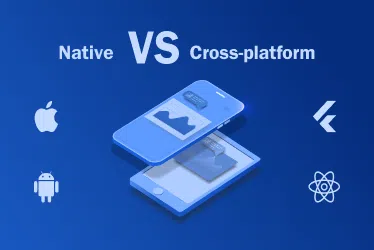Xamarin App Development Services
Bring the near-native user experience to your customers while saving on development costs with our Xamarin app development services. We deliver excellence – you scale your business as needed.
Why Xamarin?
With a variety of powerful built-in tools, Xamarin is a great solution for those who need high-performing cross-platform applications. The platform delivers a truly native user experience and is especially great when building desktop applications and MVPs.
Xamarin Development Services That We Offer
Full-Cycle App Development
SoftTeco offers full-cycle Xamarin development services. Starting with requirements collection and project analysis, we proceed to the app design and development and will provide post-launch support to ensure your app functions as intended.
Consulting
If you are thinking of developing a cross-platform app but want to know how exactly it can leverage your business, our specialists will gladly consult you. Our Xamarin consulting services include walking you through the development process and identifying opportunities for your business growth via a reliable app.
App Optimization
Is your app underperforming? We can fix that! With our app optimization services, the SoftTeco team can quickly detect the underlying issues and eliminate them, thus speeding up the app’s performance and improving its usability.
Support & Maintenance
Once your app is launched, our work does not stop here. Our Xamarin app development company offers support and maintenance services to ensure that your app seamlessly functions and that no issues or bugs come in the way. We also offer user and employee training, if needed.
01 / 04
Deliver Stellar User Experience With .NET MAUI
.NET MAUI is an open-source evolution of Xamarin.Forms and is used to create native mobile and desktop applications with the help of C# and XAML. Being highly reliable and efficient, this framework has proven to be a great software development tool, especially considering the fact that Microsoft stopped support for Xamarin in 2022.
Hence, if you are looking for a sleek and high-performing tool for your mobile or desktop app or wish to migrate from Xamarin, SoftTeco will gladly assist you. Our representatives will explain the main strengths of .NET MAUI in detail and will help you find the most suitable solution for your specific project.
Calculate Team Cost
Get a free and instant team cost estimate in just 4 easy steps. Answer a few quick questions to see an approximate sum based on hourly rates and time required. Try it now!
Benefits of Xamarin
Fast Development
The cross-platform development implies using a single codebase for multiple platforms, which significantly speeds up the development process and reduces the costs. Also, the compatibility of Xamarin with the .NET framework is another big advantage.
Near-Native Performance
The availability of various UI frameworks allows Xamarin to bring a near-native performance to its applications, which greatly impacts user experience. In this way, users get an experience that is very close to the one that the native apps bring.
Simplified Maintenance
Due to the use of a single codebase, when you implement any updates, you apply them to both Android and iOS applications simultaneously. This greatly speeds up and simplifies app maintenance, as you don’t have to worry about implementing different updates to different apps.
Open-Source
Xamarin is an open-source platform with big community and extensive documentation. This means, you can always get support and quickly find a solution to any issue that might arise. The open-source nature of the platform also makes it highly customizable.
Hire Xamarin Developers
Xamarin is a complex platform that requires solid knowledge and expertise to effectively work with it. By partnering with SoftTeco, you will get access to our extensive knowledge base and rich expertise needed to develop a secure and scalable solution. Note that in May 2023, Microsoft released .NET MAUI – the evolution of Xamarin.Forms. Our developers are proficient in both platforms and will gladly consult you on which tool will best fit your needs.
Calculate Team Cost
Get a free and instant team cost estimate in just 4 easy steps. Answer a few quick questions to see an approximate sum based on hourly rates and time required. Try it now!

